the wario of popes
Or, fun and games with the 14th century papacy
Hello friends!
By now, you know I love weird popes. Like, a lot. So it is with great joy that I bring you today’s newsletter, which features not one…
Not two…
Not even three or four…
But five weird popes! Three of them simultaneously! In the absolute mess of a century-long tale known as…
The Avignon Papacy and the Western Schism!
Full disclosure: I can’t get enough of this story. I’m on the edge of my seat waiting for the big-budget HBO miniseries of the Avignon Papacy. The reason it took me almost a full year to write a newsletter about it is I figured everyone already knows about the Avignon Papacy, because I spend so much time thinking about it. But I’ve been helpfully reminded that this isn’t the case, so papal shenanigan time it is!
Basically, buckle up for a long one this week, because I’m including all my favorite bits of this bonkers tale.
My Favorite Pope
The official start date of the Avignon Papacy is 1309, but our story starts a bit before that, in 1294, when a fellow named Celestine V was elected pope. Celestine V isn’t really at the heart of our story, for the simple reason that he served as pope for a grand total of 161 days before giving up and abdicating.
I love Celestine V. I’ve had Brita filters that lasted longer than his papacy. This guy really Marie Kondoed his life and discovered that the papacy did not spark joy. You go, man.
Anyway, Celestine V was replaced by some asshole named Boniface VIII, and that’s where the first dirtbag enters our story.
Not My Favorite Pope
To be clear, nobody liked Boniface VIII. He’s way up there on every “List of Most Hated Popes” you can find. And as far as I can tell, he absolutely deserved it. One of his first acts as pope, in January 1295, was to imprison Celestine V in a nearby castle to prevent him from trying to take back the papacy—a thing that, as we’ve already discussed, Celestine V had significantly less than zero interest in doing. Celestine V died in captivity the next year, which, suspicious?? (I mean, he was 81 years old and it was 1295, but still, suspicious??)

Boniface VIII went on to continue his record of stellar papal decision-making. He established the first Jubilee Year in 1300, a Purge-like holiday in which all of everybody’s sins were totally 100% forgiven as long as they came to Rome and spent a bunch of money on touristy things. He started appointing new cardinals in a way that almost guaranteed Romeo and Juliet–style blood feuds among Italy’s biggest families. He started getting feisty in his foreign policy, pissing off almost every contemporary European power you can think of.
No, really. Here’s an incomplete list of the rulers who either went to war with Boniface VIII or wanted to:
Albert I of Germany
Philip IV of France
James II of Aragon
Frederick III of Sicily
Edward I of England
Like, calm down, bro.
But there was one guy in that list who Boniface VIII hated more than all the others combined. See if you can guess who it is from BB8’s Wikipedia table of contents.
Petty Times With Philip IV
Boniface VIII really, really, really, really hated the French. Philip IV specifically, but also, like, the French in general. He never appointed any new French cardinals and kept driving out the ones who were already there, which was a big deal because there were like a grand total of 6 Catholic countries back then and France was…one of them.
What was the source of the feud between Philip and Boniface, you may ask? What point of religious doctrine was so contentious, so important, that the literal pope himself declared administrative war on an entire country?
Taxes. I wish there was a more exciting answer, but it was literally taxes.
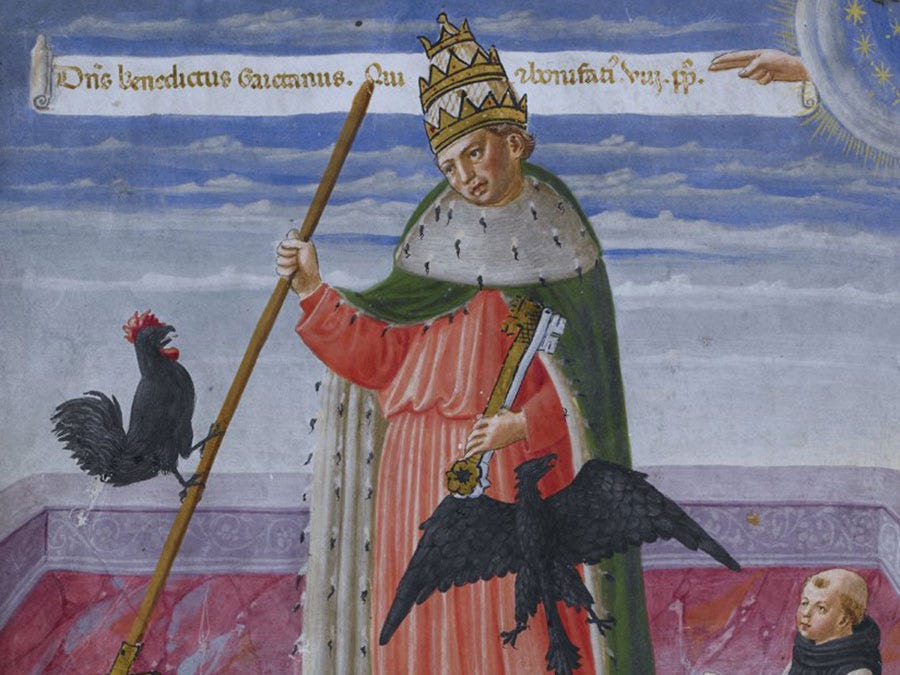
Anyway, Philip and Boniface kept sniping at each other in increasingly petty ways. Philip arrested the papal legate in France, an insult to which Boniface responded by issuing a papal bull titled “Ausculta Fili,” a Latin phrase that literally translates to “NOW YOU LISTEN UP, SON.” Philip responded by throwing a big party and lighting the decree on fire. So Boniface excommunicated basically the entire country of France.
Now you see why I love this story? These are literally the Real Housewives of 14th Century Europe.

Bitch-Slappin’ the Pope
So things continued to escalate, as things do when you have a messy pope who lives for drama. Philip was tired of the excommunications and et cetera, so he and his army led an attack on Boniface’s palace in the Italian city of Anangi in 1303. The pope absolutely lost this fight, and when Boniface refused to surrender and abdicate, the French king’s representative allegedly slapped him in the face.
This slap is known as the “Slap of Anangi.” Just imagine for a sec how much history has to hate you to name that one time Sciarra Colonna slapped you in the face.
Boniface was held in captivity (the ghost of Celestine V chuckles warmly at the thought), and he died in October of that year. He had two more exciting post-death interludes—the time he was posthumously sued for sodomy and heresy, and the time his body was “accidentally” exhumed in 1605—but we’re still in the Revenge of the Sith era of this story, and Luke Skywalker hasn’t even showed up yet, so I’ll let you read up on that yourselves if you like.
Episode IV: A New Pope
(Shut up, guys, that’s an incredible joke.)
So! Boniface VIII is dead, France is hopping mad at the papacy, and Philip IV sure wasn’t gonna let another French-hating eminently-slappable pope on the throne of Saint Peter’s. Enter… POPE CLEMENT V.
Clement V was elected pope in 1305, and what did this petty little fucker do? He took one look at Saint Peter’s Basilica, shrugged his papal shoulders, and said “Nah, man, I’m gonna stay here in France.” And he set up his own papal court in the Southern French city of Avignon.
What about the Romans? How did they feel about all this?
But there was nothing they could do: France had stacked the curia with all the French cardinals they could find, and France was rich as hell. All about that Avignon Papacy, baybee.
(I’m wildly oversimplifying late medieval religious and political conflicts here, by the way, but you knew this newsletter was called Dirtbags Through the Ages when you subscribed, you’re getting what you expected.)
The papacy stayed in Avignon from 1305 to 1376 without much attempt on Rome’s part to change things. But that all changed with the election of Pope Gregory XI, who did a grand total of two important things during his time as pope.
He moved the papal seat back to Rome in 1377.
He died immediately thereafter.
So now you’ve got no pope, a papal court sorta floating between Avignon and Rome, and two big ol Catholic powers who have passionately hated each other for almost a full century at this point. What do y’all think happened next?
Say it with me:
SCHISM SCHISM SCHISM
Another well-established fact of the Dirtbags Through the Ages canon is that bitches love schisms, and 14th century Catholics were no exception. The papal conclave elected Urban VI to replace the newly deceased Gregory XI. Only important thing you need to know about Urban VI: he was Italian.
And the French were not having it.
But instead of declaring war on the pope or forcing him to abdicate or assassinating him like people had been doing for centuries, the French had a new idea.
They called their own papal conclave and elected their own pope, Clement VII. Who then fucked off back to Avignon and established his own papal court in France. Completely ignoring the fact that there was already a pope and a papal court in Rome at the same time.
That’s right guys, we got TWO POPES.
2 POPES, 2 COURTS, 2 FURIOUS.
Alternate Pope Dimension
Basically, chaos reigned between 1377 and 1414, during which time the Avignon popes kept electing a series of new popes that history hilariously refers to as “antipopes.” Basically, these were the Wario of popes, existing across the Mediterranean in a shadowy nether-papacy where all the colors are different and the mustaches were more aggressive.
Finally, in 1414, the church got together to decide which of the two popes was the real one. By this point, the options were Pope Gregory XII in Rome, and Antipope Benedict XIII in Avignon. I’ll give you three guesses which one they chose.
And you’re gonna need all three guesses, because the answer is NEITHER OF THEM.
The Council of Constance made the absolutely incredible decision that the solution to the problem of having two warring popes was to ELECT A THIRD POPE, which they did, electing Pope Martin V in 1417.
That’s three simultaneous popes. These messy bitches. I love them.
Eventually, this bananas strategy sort of worked, as Martin V emerged as the legit pope and the other two warring lines kinda faded gradually out by the 1440s.
So that’s basically the end of the Western Schism and the official end of the Avignon Papacy.
The moral of the story? Don’t get in a tax disagreement with the King of France, or history students 600 years later will have to figure out why there were three popes at once for a second.
PHEW. I don’t know about you, but I’m exhausted. I don’t even have the energy to plug anything this time. This story is 2,000 words long. I don’t know, buy my book or something. I’m gonna go nap.
-Allison



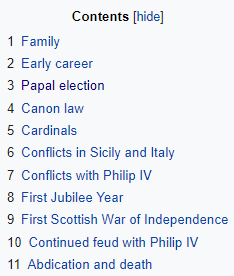
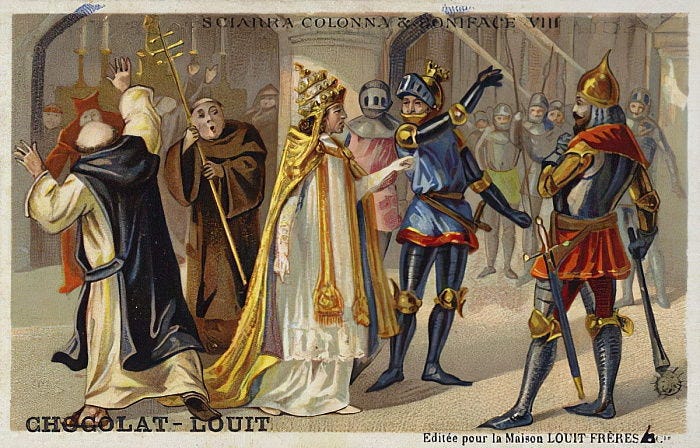
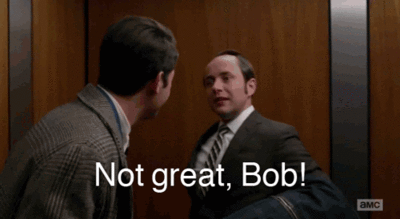
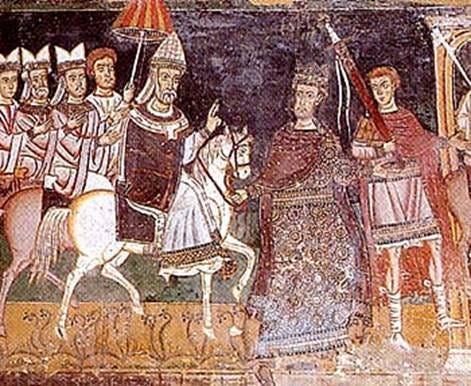

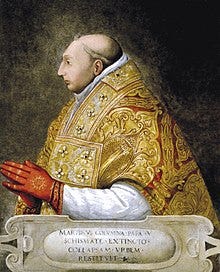
This was just the kind of dramatic history I needed this Tuesday morning to get me going. THANK YOU!
This was FANTASTIC. as a historian of the period, I applaud your successful effort to make this period of history both informative and entertaining and figure out a way to work Mario into the narrative. I see a book of these historic episodes in your future. Please make that happen.